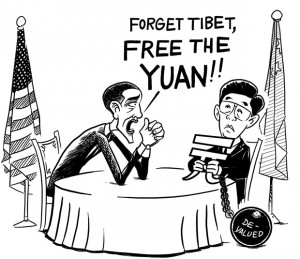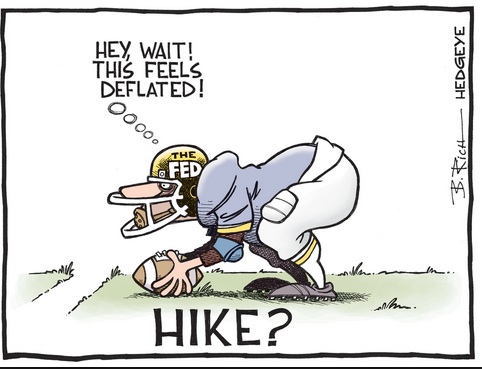Pavel Alpeyev and Grace Huang write: Toshiba Corp. is embarking on a revamp that will leave the one-time technology pioneer a shadow of its former self. An accounting scandal has left the conglomerate in tatters, facing record losses, thousands of job cuts and potential spinoffs that may include the consumer electronics unit that made it a global player.
President Masashi Muromachi is being forced to make tough decisions after the company projected a loss of ¥550 billion for this fiscal year. Toshiba’s bond ratings were cut to junk, with restructuring costs seen outpacing previous estimates and dragging on earnings.
A household name known for making the first DVD player and the first popular laptop computer, Toshiba has clung to legacy consumer-electronics businesses that are wilting under pressure from Samsung Electronics Co. and Chinese manufacturers. As Panasonic Corp., Mitsubishi Electric Corp. and other Japan-based competitors shift away from domestic products, Toshiba has lagged behind, relying on profit from semiconductors and power generation to subsidize its TV and computer units.
Muromachi, who took over in July after the accounting irregularities were revealed, plans to announce by the end of the year far-reaching changes that may include the sale of one or more consumer-products businesses. The company said Monday it will seek a buyer for its health care unit, which makes diagnostic imaging systems such as MRI and X-ray equipment. And Toshiba is considering combining its PC operations with those of Fujitsu Ltd. and Sony Corp. spinoff Vaio, Muromachi said this month.
While such a restructuring will leave the Tokyo-based electronics manufacturer much smaller, it will give Toshiba enough breathing room to funnel more money into its mainstay memory chip division.
The chip business has been Toshiba’s most profitable, accounting for more than 100 percent of operating income in the year ended March 2015. Its lifestyle segment, which includes PCs, televisions and home appliances, yielded an operating loss of about ¥110 billion that year.
The company is also considering the sale of property and investments after earlier selling its holding in elevator-maker Kone Oyj. Other plans include accounting training, corporate governance reviews, management seminars and an evaluation system for the president and chief executive officer.
The company’s weaknesses are greater than Moody’s Investor Service and Standard & Poor’s had anticipated and may deepen in the coming months, the agencies said.
Toshiba’s earnings announcement “reflects a deterioration of business results not only in weak businesses” — including digital and white goods and home appliances and also semiconductors — “but also in the company’s core businesses,” Standard & Poor’s wrote in a statement. As a result it expects Toshiba’s earnings margin before interest, taxes, depreciation and amortization for fiscal
Still, shedding its consumer electronics unit and spinning off the power and real estate businesses could help make Toshiba an attractive chipmaker. With some ¥1.68 trillion of revenue in the latest fiscal year, the semiconductor arm as a standalone company would be a top-10 global chipmaker, data show.
Toshiba’s semiconductor business is a major player in flash memory — increasingly popular as fast, energy-efficient storage in phones, tablets and laptops.








